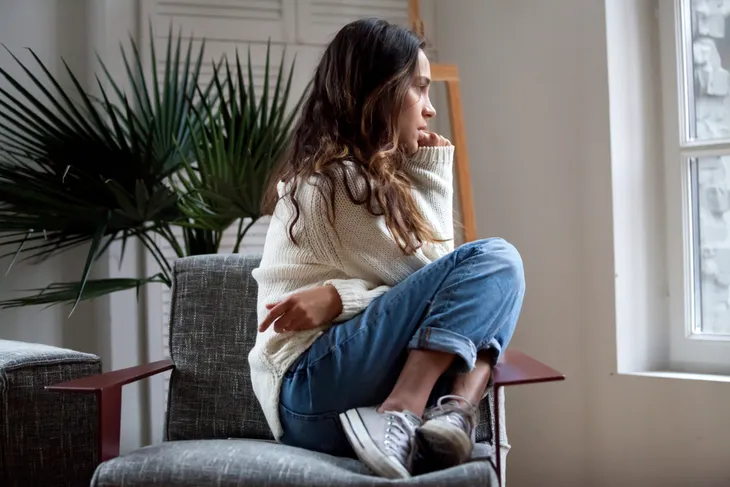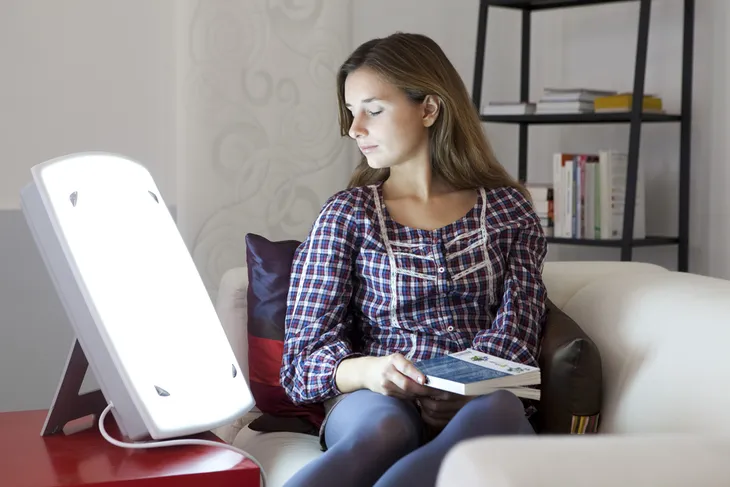As the days get shorter and the nights grow longer, sometimes it can seem like we barely get a chance to see the sun. For most people, this can be frustrating; and for others, the slide into winter can actually lead to a subset of depression called seasonal affective disorder, or SAD.
SAD is a form of clinical depression that follows a seasonal pattern. The symptoms are present during the fall and winter months and resolve in the spring and summer. Common SAD symptoms include: depressed mood, loss of interest, fatigue, sleep changes (usually sleeping more), significant appetite changes (usually craving more starches and sweets), difficulty concentrating and sometimes thoughts of death or suicide.
SAD can be tough, but it is treatable. Some people might use daily therapy with a light box, but antidepressants are also used. My lab at the University of Vermont wanted to test another kind of treatment – cognitive-behavioral therapy. We wanted to see if using this talking-based therapy could deliver more lasting results than light therapy does.
Who gets SAD and how it is different from depression?
One popular misconception about SAD is that it affects everyone at northern locations, though it’s true that most people at high latitudes experience SAD symptoms to a certain extent. In the United States, the farther north you go, the more cases of SAD you find. SAD prevalence has been estimated to range from 1% in Florida to 10% in Alaska. While it is more common the farther north you go, only a minority of people living in these places actually have the number and severity of symptoms it takes to count as winter depression.
Everyone can experience some changes in behavior or outlook with the shift of the seasons, and many of these are normal. When it is cold, you might not want to go out as often. When the nights are longer and the days are shorter, your sleep patterns may change.
But SAD is different from these typical changes because the symptoms can make it difficult to function at work or school or in relationships and cause great distress. We can think of seasonal changes as on a continuum, ranging from no symptoms at all to seasonal affective disorder on the extreme end. In northern locations, most people fall in the middle, with mild changes in energy, sleep and food preferences in winter versus summer.
We don’t know why short days can lead to SAD, but several hypotheses have been proposed. For instance, a person’s biological clock may run slow, delaying circadian rhythms. Perhaps longer nights mean a longer period of release for melatonin, the “hormone of darkness” that signals sleep, which leads to a longer “biological night.” Both of these scenarios would lead to a mismatch between sleep and wake cycle and the light-dark cycle.
Treating SAD
One popular treatment for SAD is light therapy, which involves daily exposure to a device that produces 10,000 lux of full-spectrum light, minus the harmful ultraviolet rays. The idea is that it mimics sunlight. Light therapy usually takes place first thing in the morning to simulate a summer dawn and jump-start the circadian clock. It is an established, effective SAD treatment. Across studies, 53% of SAD patients experience complete relief from their symptoms with light therapy.
My laboratory has been conducting clinical trials to test an alternative treatment: cognitive-behavioral talk therapy (CBT). CBT is not a new treatment – it has been used and researched for nonseasonal depression for over 40 years. But, until now, it hasn’t been tested for SAD in clinical trials.
CBT involves recognizing and changing negative thoughts that feed sad moods and engaging in pleasurable activities that counteract depressed moods. In SAD specifically, a lot of these negative thoughts are gloomy thoughts about the winter season, short days and winter weather.
Dwelling on these negative thoughts and going into “hibernation mode” by withdrawing to the couch or bed breeds depression. In CBT for SAD, we try to get people to be proactive by questioning and reframing these negative thoughts and engaging in behaviors that make them approach winter rather than avoiding it, especially through increased social activities and keeping up hobbies and interests in the winter.
The basic idea is to tweak negative, helpless attitudes about winter (“Winter is a dreaded season to endure”) to be more positive and empowering (“I prefer summer to winter, but winter also offers opportunities for enjoyment if I take control of my mood rather than letting the season dictate how I feel”).
Comparing talk therapy and light therapy
We just finished a clinical trial at the University of Vermont where 177 adults with SAD were treated with either light therapy or CBT across six weeks in the winter and then followed for two years.
Initially, we found that light therapy and CBT were both effective SAD treatments. Both were associated with large improvements in SAD symptoms during treatment in the winter. However, by two winters later, there was a clear advantage of initial treatment with CBT over light therapy.
People who were treated with CBT had fewer relapses of their SAD: slightly less than one-half of the people in the light therapy group relapsed as compared to slightly more than one-quarter in the CBT group. The people treated with CBT also had less severe winter symptoms overall than those treated with light therapy.
Why does the CBT seem to have a longer-lasting effect?
These results suggest that the effect of CBT is more durable in the long run.
It might be that long-term compliance with light therapy – sitting in front of a light box for at least 30 minutes a day, every day during winter – is part of the problem. We found that slightly less than one-third of the people we treated with light therapy reported any light therapy use one or two winters later. This is an issue because light therapy is intended as a daily treatment during the fall and winter months that is continued until spring – with its increase in sunshine – arrives.
Although CBT involves effort to attend sessions, work with a therapist to change winter habits and “homework” to practice skills, it seems to pay off in the long run with better outcomes. It might be that teaching people to reframe their thoughts about winter can help them overcome SAD year after year.
Kelly Rohan, Professor of Psychology, University of Vermont
![]()
This article is republished from The Conversation under a Creative Commons license. Read the original article.







